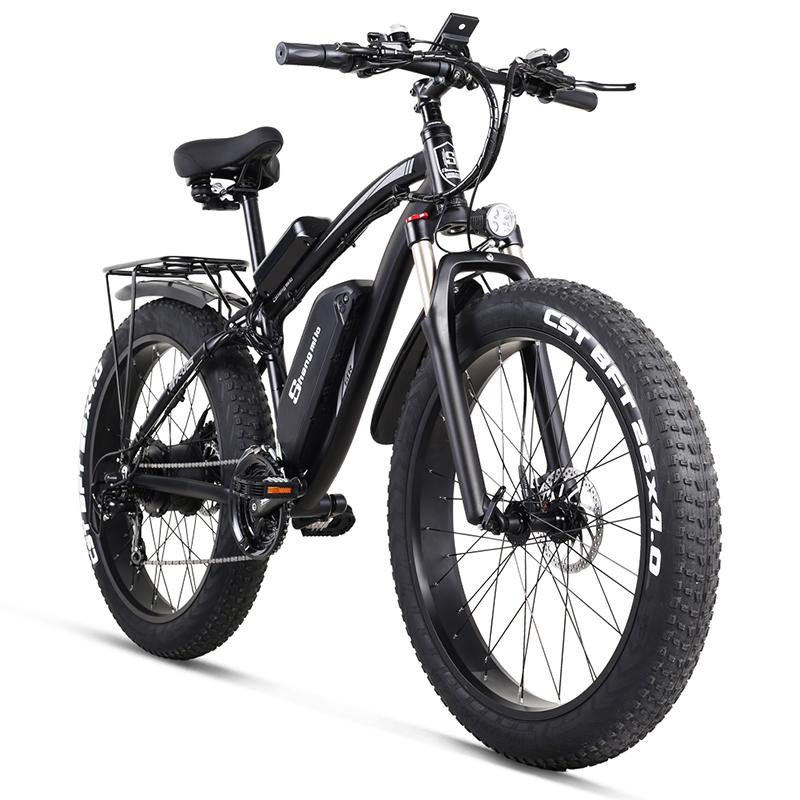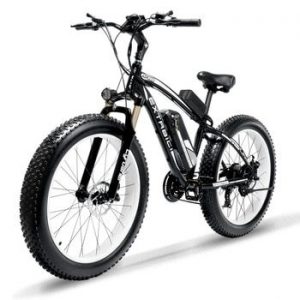- Why buy an electric bike?
- Are there any negative points?
- Battery
- Robbery
- Weight
- The criteria for choosing an electric bicycle
- Which battery?
- The engine
- What kind of assistance?
- Autonomy-electric-bike
- Brakes
- The derailleur
- The weight
- The display (or console)
- With a child
Today there are many models, including mountain bikes and racing bikes, at prices ranging from 800 to several thousand euros. Battery life is more than sufficient for urban travel. Here are a few pointers to help you find your way around when choosing an electric bike.

Why buy an electric bike?
An electrically assisted bicycle (e-bike) – or “electric bicycle” – is still a bicycle: you have to pedal to benefit from the help of the motor, powered by the battery. The power assist cuts out when the pedal is off and at 25 km/h. But the possibilities are far superior to those of a conventional bicycle. Here is a list – not exhaustive – of the advantages of the electric-assisted bike.
You can go long distances without getting tired. The trips are less strenuous, and it is possible to arrive at work without sweating. You cross the coasts effortlessly; the wind is no longer a problem. Carrying a child on the back of the bike, or even several children in a cargo bike become possible.
In sporting practice (mountain bike or road bike), climbs are easy to overcome: It is ideal for cycling enthusiasts who have aged or suffer from joint problems, but who want to keep up with the younger ones on outings.
Finally, and this is not the least of its qualities, the electric bike is ideal for resuming or continuing physical activity when you have a health problem. Whether you are diabetic, cardiac, suffering from cancer or joint disease, the e-bike allows gentle practice on the cardiorespiratory and muscular levels, without joint constraints. When you know the therapeutic importance of the activity, this is a definite advantage.
Are there any negative points?
Battery
Once the battery is discharged, the bike becomes very difficult to ride.
Robbery
An electric bicycle also attracts attention. The best way to avoid theft is to park it away from covetousness. If this is not possible and it has to stay outside, it is better to remove the battery: Buying back a battery costs several hundred euros and dealers often ask for the original invoice, which is quite a deterrent for thieves. An anti-theft device is obviously a must.
Weight
An electric bicycle weighs a lot, at least 24 kg. Cycling a few steps by hand can be difficult.
The criteria for choosing an electric bicycle
Which battery?
Lithium-ion have replaced lead and nickel-metal hydride (NiMH). Recycling is not without severe ecological problems, but this material has become a standard in the world of recharge-bike batteries, including for electric bicycles.
Electric bicycle batteries are characterized by their capacity, expressed in watt-hours (Wh). The values are generally between 300 and 600 Wh. The higher the capacity, the more likely it is that the autonomy will be high, although this rule is not infallible.
You may also find a value in ampere-hours (Ah) accompanied by another in volts (V). Multiplying them gives the capacity in watt-hours. The ampere-hours provide an idea of autonomy: 8 Ah battery will not last as long as 11 or 14 Ah one. The second number in volts corresponds to the “tone” of the assistance, but most batteries today are 36 V.
Be careful, however, concerning the autonomy, the number of watt-hours or ampere-hours is not to be taken literally: Our test shows that an e-bike can claim a battery of 576 Wh (and 16 Ah) and not go beyond 45 km of autonomy.
The engine
250 W motors equip the e-bikes. The motor is located either in the crankset or in the rear wheel. Models with a motor in the front wheel have almost disappeared from the sales circuit.
What kind of assistance?
Two concepts come together.
The “on/off” assistance, usually coupled to a motor in the wheel, works thanks to a pedal unit with a simple pedal sensor. It gives a real boost right from the start, which many people appreciate. If the design is poor, it can give the impression that it is not adapted to the terrain, and driving can cause jolts.
The progressive assistance provided by the motor in the crankset requires a force sensor. It is provided according to the effort made. The aid is dosed, which makes piloting easy and comfortable. This type of assistance gives a driving sensation closer to the practice of classic cycling than the “on/off” assistance.
Autonomy-electric-bike
Over time, the battery’s life will inevitably diminish, but you can count on several hundred charge and discharge cycles with a brand name battery (Bosch, Yamaha, etc.). The cost of the mains load is about a few cents
Brakes
As e-bikes go up to 25 km / h and rarely weigh less than 25 kg, an excellent braking system is essential. Four types of brakes are now fitted to e-bikes:
mechanical skates brake (V-Brake) ;
mechanical discs brake;
hydraulic brake ;
hydraulic disc brakes.
Our tests carried out over the years on nearly 40 e-bike models show that no system stands out from the rest. Models equipped with V-Brakes are sometimes more effective in braking than those with hydraulic brakes. The latter is considerably more expensive, but still provide a level of user comfort that needs to be taken into account. A simple pressure of the fingers is enough to actuate the braking when for the same result, it is necessary to apply an important force with a mechanical cable system. However, be aware that hydraulic brakes require more careful maintenance: the circuit must be purged every year to get rid of air bubbles. If you opt for hydraulic disc brakes, expect to have to replace the linings once or twice a year, especially if you drive in an urban environment where the brakes are under heavy load. Hydraulic brakes will last longer.
The derailleur
Compared to cassette derailleurs, hub gear systems (typically the Shimano Nexus) have the advantage that they require little maintenance, do not dirty the bottom of the pants and above all, the chain never jumps! Also, they allow gear shifting when stationary. Ideal for urban use, a derailleur in the hub is therefore ideal for an e-bike. Be careful; however, each gear change suspends the assistance very briefly. On a climb, this can be surprising and, above all, give the impression that the momentum is lost. But it’s more of a habit to get into than a real inconvenience. Some manufacturers have solved the problem by equipping their bikes with a variable speed drive, which allows continuous shifting.
The weight
It doesn’t matter as much as you might think, because while driving, the audience makes you forget it. However, if to park it, you have to cross a few steps on your bike by hand, it may be interesting to take this criterion into account. As all conventional e-bikes weigh at least 24 kg, it may be appropriate to turn to a compact or folding electric bicycle.
The display (or console)
Usually clipped to the handlebars, it displays various information such as assistance level, battery charge level and speed, or even the number of kilometres travelled. It often includes the assistance level controls, and sometimes also turning on the lights. Most manufacturers have opted for non-removable displays, which exposes them to damage if the bike is parked on the street.
With a child
If the bike is intended to be fitted with a child seat in the rear, an open or gooseneck frame should be chosen to facilitate the passage of the leg. Bicycles with a bar in the middle carry too much risk of a fall or injury to the child. Remember that for children under 12 years old, a helmet is mandatory.
If you wish to buy an electric bike from Turkey, please do not hesitate to contact us by mail at [email protected] or to call us at +90 532 361 5149. We can help you to get in direct contact with producers or provide you with everything that you need.
Please visit the company website for more information about their products. If you want to know about companies in Turkey, visit our website.











